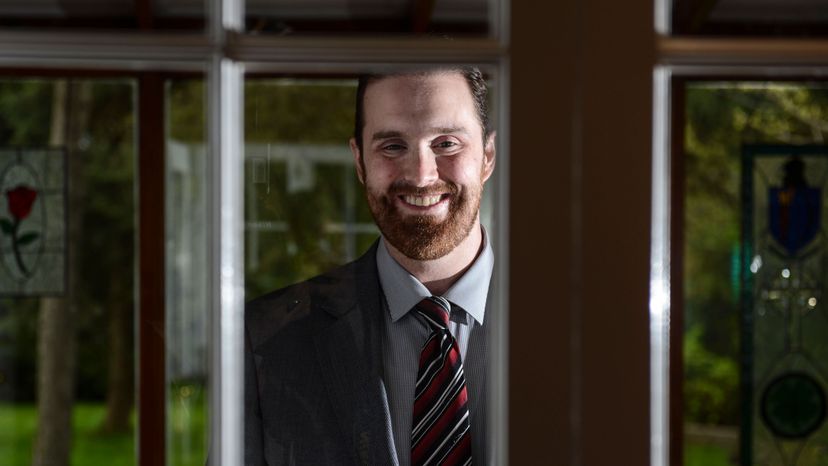
Earlier than the Seventies, homosexuality was usually thought-about a psychological sickness. Certainly, the American Psychiatric Affiliation (APA) labeled it as such in its first Diagnostic and Statistical Guide of Psychological Problems (DSM), revealed in 1952. This was not a controversial place on the time — it held with prevailing norms. However then homosexual activists began protesting at annual conferences of the APA, and introduced scientific proof opposing this view.
In 1973, it was put to the vote and the bulk (58 p.c) of APA members agreed homosexuality ought to not be thought-about a psychological dysfunction [source: Group for the Advancement of Psychiatry]. This modification was an enormous step for homosexual rights and helped to shift societal considering on homosexuality. It additionally demonstrated the facility of the DSM, the diagnostic guide of the APA, on public opinion.
Now in its fifth version and often called DSM-5 (that is the primary version with out a Roman numeral), the publication doesn’t provide therapy or medicine recommendation for the 157 issues described in its pages. Somewhat, it was designed to assist healthcare professionals higher determine and diagnose psychological issues, corresponding to people who impression persona, cognition, temper and identification. The guide additionally supplies uniform diagnostic codes for every situation, that are used to facilitate billing and knowledge assortment [source: APA]. Usually, if a situation is just not listed within the DSM, U.S. medical health insurance corporations will not pay for therapy for it.
The guide is primarily utilized in the USA, with a lot of the remainder of the world’s well being professionals turning as a substitute to the World Well being Group’s (WHO) Worldwide Classification of Ailments (ICD), which covers all illnesses, not simply these psychiatric in nature. APA encourages healthcare professionals to think about DSM-5 and ICD as "companion publications," designed to be appropriate with one another.
So how did it begin? The DSM was developed in response to an apparent want for psychological sickness classification techniques. The U.S. Census of 1840 took child steps towards the eventual growth of the guide when it added incidents of "idiocy/madness" to its survey. This was presumably the primary try at statistical information-gathering associated to psychological sickness, and subsequently a fairly large deal. In 1880, the Census fleshed out the psychological well being classes to incorporate points like dementia, melancholia, epilepsy and mania [source: APA].
Psychological establishments of the previous have been the stuff of horror motion pictures, a destiny typically worse than loss of life for individuals who wound up behind their partitions. Only a century in the past, folks have been institutionalized for comparatively frequent, now-treatable issues, like bipolar dysfunction [source: Mental Health America]. Thankfully, psychological sickness detection, therapy and prognosis, though nonetheless removed from excellent, have come a good distance. One of many measures credited with bettering care high quality was the event of the DSM.
In 1917, the American Medico-Psychological Affiliation (the forerunner of the APA) and the Nationwide Fee on Psychological Hygiene got here up with a plan, adopted by the Census Bureau, for gathering uniform well being statistics in psychological hospitals. And in 1921 the APA began to develop psychiatric classifications for varied extreme psychiatric issues. After World Battle II, the APA used a much bigger classification system developed by the U.S. Military because it was treating veterans to develop the primary DSM [source: APA].
Contents
- The DSM Classification Course of
- Modifications from DSM-IV to DSM-5
- The Addition of Part III
- Controversies and Reversals With the DSM
The DSM Classification Course of
“
Dr. James G. Shanklin, a hospital psychiatrist, administers electrical shock and anesthesia to a affected person in 1949. The DSM was initially developed to catalog psychiatric issues at a time when mentally sick folks acquired poor or no therapy. Bettman/Getty Photographs
The primary official model of the DSM was launched in 1952, with the latest model — DSM-5 — revealed in 2013 [sources: Kawa and Giordano, APA]. Every replace was the results of years of DSM-5 Job Drive conferences, dialogue by work teams and enter by many psychiatric consultants all over the world. Right this moment, the guide features a trio of parts for every dysfunction:
Diagnostic classification comprises the checklist of psychological issues formally acknowledged. All diagnoses are assigned a diagnostic code (obtained from the World Well being Group’s ICD), which is useful for assortment of information, in addition to streamlining the billing course of for suppliers and medical establishments.
Diagnostic standards are additionally obtainable for each dysfunction. The standards lists signs, together with their period, that have to be current to realize a selected prognosis. There are additionally a litany of different issues and signs listed that ought to first be dominated out.
Descriptive textual content for every dysfunction comprises details about prevalence, growth and course, threat and prognostic elements, and different related info.
It is no small feat for a psychological sickness to be added to the DSM. In reality, DSM-IV wasn’t all that totally different from DSM-5, however the modifications that did make the reduce have been completely reviewed and mentioned by a number of the foremost minds within the psychiatric area. DSM-IV was revealed in 1994, so the DSM-5 Job Drive needed to evaluate all scientific research revealed on psychiatric issues since then. Keep in mind, DSM-5 wasn’t revealed till 2013, in order that’s practically 20 years’ value of analysis to have a look at.
Following the great evaluate, proposals to change present diagnoses have been made, which required vigorous dialogue and debate among the many committee members, plus enter from outdoors consultants. All proposals have been examined by the duty pressure, in addition to two extra committees created for a extra independent-opinion, the Scientific Evaluation Committee and a Scientific and Public Well being Committee [source: APA].
New modifying modifications have streamlined the method, nonetheless. Somewhat than ready a long time between points, consultants can now submit modifications on-line, serving to to make the guide extra well timed and present. As soon as authorised by the APA board of trustees, clinicians and different DSM customers are notified concerning the edit, to allow them to make prognosis modifications in actual time.
"This has been a significant advance," says Dr. Philip Wang, director of the APA’s analysis division, which supervises the DSM. He says this transformation has successfully turned DSM-5 right into a "residing doc," of types. "For instance there’s sufficient scientific proof and to illustrate there’s a legitimate change, to have to attend 15 or 20 years for clinicians and sufferers to learn from that change is unconscionable," he provides.
As soon as a change is made, customers can hover over it within the on-line model to seek out out the pertinent particulars, what the earlier materials was, and the supporting scientific proof that impressed the edit. "It is fully clear, steady, and on the finish of the day, it hopefully is sweet for clinicians and advantages sufferers," Wang says.
Modifications from DSM-IV to DSM-5
“
David Moloney, an grownup with Asperger’s syndrome poses for a photograph in 2013 after sharing his issues about the truth that his prognosis could be gone from the brand new DSM-5 and folded right into a prognosis of Autism Spectrum Dysfunction. Tara Walton/Toronto Star by way of Getty Photographs
One of many main overhauls between DSM-IV to DSM-5 was accomplished to deal with the issue of extreme comorbidity, which is when one affected person is recognized with two or extra circumstances. There was quite a lot of this occurring with DSM-IV and earlier variations. "If somebody was recognized with one situation they have been more likely to even be [incorrectly] recognized with having a second situation," Wang explains. "A number of sufferers would fall in between classes, and there was quite a lot of use of a class known as ‘not in any other case specified’ [NOS]. In case you have that type of comorbidity and that type of use of NOS, it implies that the classes will not be fairly working for sufferers and clinicians."
To handle this drawback, which clinicians had reported for a few years beforehand, the DSM-5 mixed practically 30 issues, successfully lowering diagnoses, comorbidity and unhelpful NOS. Two diagnoses have been eradicated fully, and 15 have been added, in accordance with Wang.
In all probability essentially the most well-known prognosis eliminated was Asperger’s syndrome, which is now labeled underneath the autism spectrum dysfunction (ASD) prognosis. This modification was made in response to the analysis and scientific findings gleaned over the course of the last few a long time, with autism spectrum dysfunction revised to embody 4 beforehand distinguished issues (autistic dysfunction, Asperger’s dysfunction, childhood disintegrative dysfunction and pervasive developmental dysfunction not in any other case specified) [source: Autism Society].
The hope is that refining the standards and together with a severity scale will make a prognosis extra legitimate and dependable. Nevertheless, some critics expressed concern that eradicating a long-held prognosis would negatively have an effect on sufferers and their households and trigger confusion within the billing/therapy communities [source: Autism Research Institute].
"I do know that there was quite a lot of deliberation about it after which quite a lot of questioning," Wang explains of the swap. "It is one thing that individuals are nonetheless wrestling with." Nevertheless, the advocacy group Autism Speaks factors out that there shouldn’t be any change in accessing companies or insurance coverage protection if somebody’s prognosis was previously Asperger’s and is now ASD.
DSM-5 has additionally revamped issues right into a lifespan method. As a substitute of classifying sure points as solely "childhood issues," it discusses how they alter and manifest in any respect phases. DSM-5 additionally emphasizes the significance of oldsters in prognosis and therapy. Additionally, though many issues have been streamlined, two childhood-specific points have been added.
Disruptive temper dysregulation dysfunction (DMDD) describes extreme, recurrent outbursts of mood which might be extraordinarily inappropriate for the state of affairs or in degree of depth. And social communication dysfunction (SCD) is "characterised by a persistent issue with verbal and nonverbal communication that can’t be defined by low cognitive skill," in accordance with the APA. Prior editions of DSM did not embody the suitable therapy for these issues as a result of that they had not been fully outlined and studied, and as such therapy diverse and suffered [source: APA: DSM-5 and Diagnoses for Children Fact Sheet].
The Addition of Part III
DSM-5 additionally launched Part III, which is for circumstances the place there’s not sufficient scientific knowledge but to find out whether or not they need to be labeled as psychiatric issues. Amongst these circumstances are Web Gaming Dysfunction, Caffeine Use Dysfunction (see sidebar) and Persistent Advanced Bereavement Dysfunction [source: APA].
Part III additionally comprises measures and fashions which have potential to assist clinicians higher consider sufferers. "There’s been a push that there are dimensions that run throughout issues," Wang says. "Some sufferers have signs or indicators that seem throughout many diagnostic classes. That is why they’re ending up with lot of comorbid diagnoses."
So, the DSM-5 launched the cross-cutting dimensional measure, which helps clinicians decide if there are underlying dimensions that might be current in a number of issues. Though this method continues to be in want of validation earlier than it may be completely included in the primary DSM-5, Wang notes that many physicians already comply with this line of thought. "It is like when main care docs do a evaluate of techniques," he explains. "They probe additional if there is a optimistic. In psychological well being we’d like a psychological well being evaluate of techniques. That is what the DSM cross-cutting measure is."
Part III additionally features a cultural formulation interview information, with questions to assist clinicians determine how a affected person’s cultural background impacts their notion and presentation of psychiatric signs, therapy and prognosis. "The interview supplies a possibility for people to outline their misery in their very own phrases after which relate this to how others, who could not share their tradition, see their issues. This offers the clinician a extra full basis on which to base each prognosis and care," APA explains in a Part III Truth Sheet.
Caffeine Use Dysfunction (CUD) is a Factor
One or two cups of Joe isn’t any large deal, however an excessive amount of caffeine can truly lead to "caffeine intoxication," which may even land an individual within the hospital. DSM-5 added CUD to Part III as a potential prognosis for additional research. Till analysis both confirms or denies this prognosis, cease to think about the next: Do you actually wish to give up caffeine use, or at the least management it, however are unsuccessful? Do you proceed to make use of caffeine even when it causes you bodily or psychological points? Do you expertise extreme withdrawal for those who do attempt to again off utilization? If you happen to answered sure to all three you can be a candidate for CUD [source: Addicott].
Controversies and Reversals With the DSM
“
Homosexual and lesbian activists protest discrimination in the course of the Christopher Avenue Liberation Day March, June 1971 in New York. On the time, the DSM nonetheless labeled homosexuality as a psychological dysfunction. Michael Ochs Archives/Getty Photographs
Some key about-faces are proof that the DSM is not against altering with the instances. Listed below are some examples of main turnarounds:
Consenting adults who take pleasure in comparatively unconventional BDSM, fetishes and even cross-dressing needn’t worry being thought-about mentally sick, due to the DSM-5 replace, which "depathologized" kinky intercourse. As a substitute, they’re now thought-about folks with "uncommon sexual pursuits" [source: National Coalition for Sexual Freedom].
Additionally, in line with the larger acceptance of transgender folks, DSM-5 changed the prognosis of "gender identification dysfunction" with the much less controversial "gender dysphoria," which doesn’t classify those that do not determine with their beginning gender as having a psychological dysfunction. Nevertheless, the prognosis does spell out a number of the challenges of residing with gender dysphoria, in addition to the totally different paths folks select to take to resolve this [source: APA]. (Some critics of the change level out that some insurance coverage corporations will not cowl hormonal or surgical therapy if the situation is just not thought-about a psychological dysfunction.)
One other large change was the removing of homosexuality as a psychological dysfunction from DSM-II. "APA’s 1973 diagnostic revision was the start of the top of organized medication’s official participation within the social stigmatization of homosexuality," writes Jack Drescher within the journal Behavioral Sciences. "Related shifts steadily befell within the worldwide psychological well being neighborhood as properly. In 1990, the World Well being Group eliminated homosexuality per se from the Worldwide Classification of Ailments (ICD-10). "
This was all completed in child steps. Initially, DSM-III made a distinction between individuals who have been snug with their homosexuality and people who weren’t — the latter might be recognized with the psychological dysfunction Sexual Orientation Disturbance. Ultimately, this prognosis was additionally faraway from the guide within the Eighties [source: Group for the Advancement of Psychiatry].
One criticism concerning the DSM is that when a situation is included within the guide, it might flip what as soon as was thought-about "regular" conduct right into a pathological sickness that have to be handled — usually with medicine. "Many tens of millions of individuals with regular grief, gluttony, distractibility, worries, reactions to emphasize, the mood tantrums of childhood, the forgetting of outdated age, and ‘behavioral addictions’ will quickly be mislabeled as psychiatrically sick and given inappropriate therapy," wrote psychiatrist Allen J. Frances in Psychology Right this moment on the time that DSM-5 was going to press.
However Wang factors out that DSM-5 has included an acuity measure to assist with that, since so many issues vary extensively of their severity. These scales assist clinicians higher consider signs and ranges of impairment. For instance, to illustrate you are grieving over the loss of life of your father. Are you continue to ready to deal with life or are you barely capable of get off the bed? As soon as assessed, clinicians will probably be higher capable of land on the suitable therapy, whether or not medicine, watchful ready, speak remedy or a mixture of those [source: APA Integrated Assessment fact sheet].

